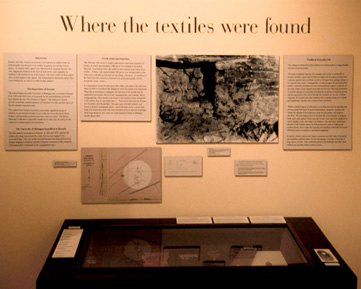
 |
 |
 |
 |
 |
 |
 |
 |
 |
Where the Textiles Were Found
 Textiles
in Everyday Life
Textiles
in Everyday Life
The settings in which the textile artifacts were found point to a range of daily activities involving textiles.
The study of garbage deposits, for example, tells us that everyday life at Karanis included a good deal of what we might call recycling, as items were routinely repaired and reworked, as well as salvaged from garbage dumps to be repaired and reused. Consequently, we must imagine for each discarded artifact a potential succession of users corresponding to phases in the life of the cloth artifact, from original ownership and first use following production to possible changes in ownership including the recipients of hand-me-downs and the rag-pickers who sorted through the remnants no one else wanted. Typically, the textiles (and other artifacts) left in garbage heaps are so small and fragmentary that they have outlived their usefulness.
Within courtyard spaces we find pieces of textiles and tools for spinning and sewing, along with items of personal adornment, vessels for cooking and eating, the remains of food and toys, items for agriculture, and religious devotion. We can imagine much of the daily life of households occuring in these light, open spaces, where men and women came and went, gathered to check supplies, cook, and watch over children. And here they would have attended to the messier phases of cloth production, such as washing and carding fleeces, and to tasks like spinning and mending, which did not require dedicated spaces or expensive, specialized equipment.
In quieter, cleaner, and private interior rooms the movable tasks of spinning and mending could take place but also the storage, weaving and sewing of large pieces of cloth. Finer and better preserved furnishings and other cloth artifacts are typically found in interior rooms.